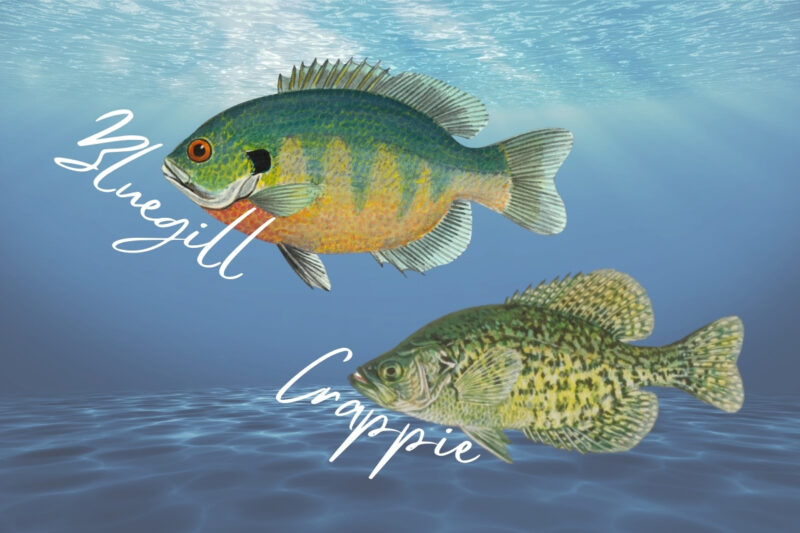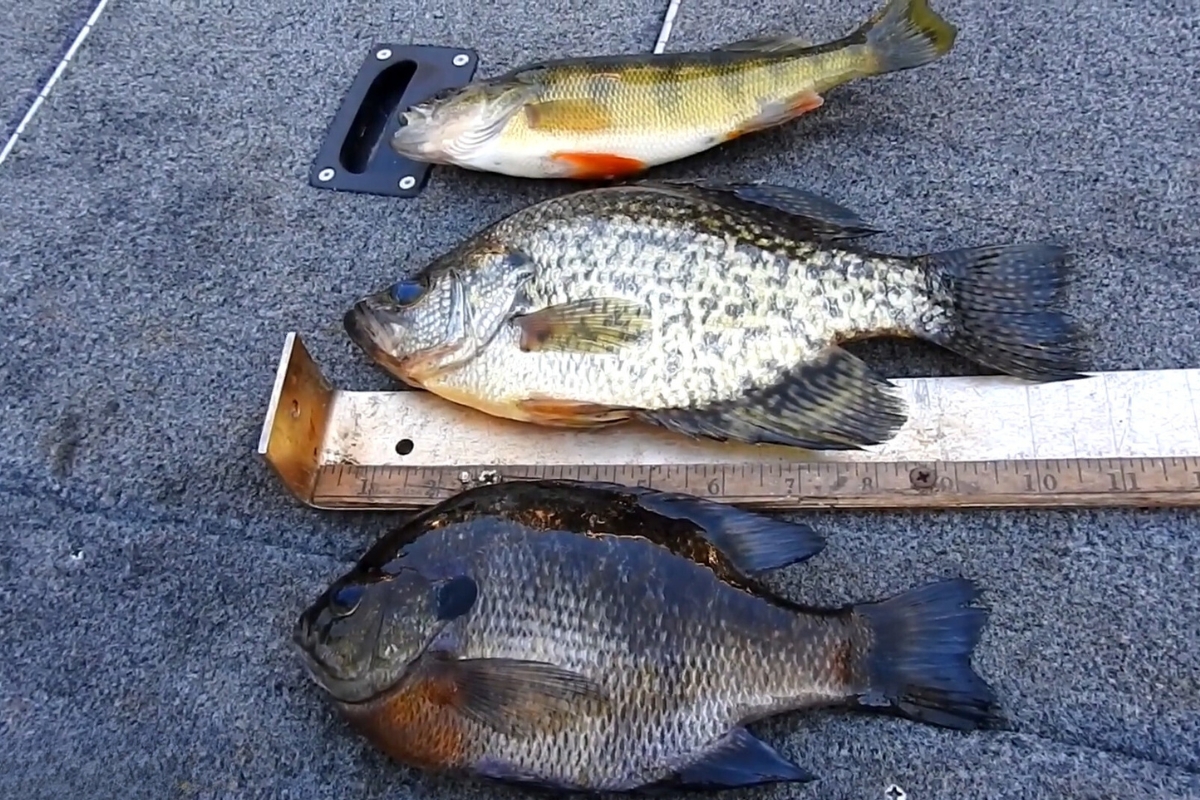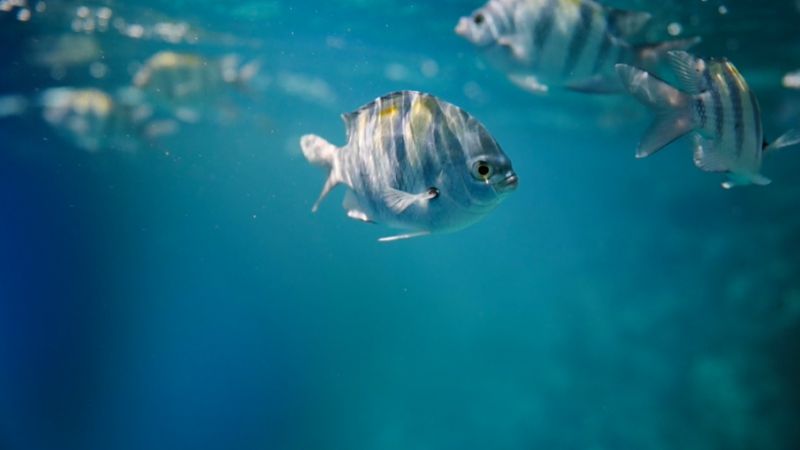Crappie and bluegill look similar at first, but recognizing their unique traits is crucial. In this guide, you’ll learn how to spot the key differences between them quickly. From body shape to color patterns and fin details, you’ll get a clear understanding of how to tell them apart with ease.
Body Shape and Size
| Feature | Crappie | Bluegill |
|---|---|---|
| Body Shape | Elongated, slender | Round, deep-bodied |
| Size | 12-15 inches, larger overall | 8-10 inches, smaller overall |
| Weight | Often exceeds 2 pounds | Rarely exceeds 1 pound |
| Coloration | Silvery with black spots | Blue-green with orange underbelly |
| Fin Structure | 6 anal spines | 3 anal spines |
| Habitat Preference | Deeper water near structure | Shallow water near vegetation |
| Feeding Behavior | Primarily at dawn and dusk | Active throughout the day |
Crappie have a longer, more elongated body compared to the compact, round shape of bluegill. This difference becomes clear when both fish are observed together. The streamlined body of crappie allows them to move more smoothly in deeper waters, whereas bluegill’s disk-like shape is suited for maneuvering in shallower areas and around thick vegetation.

Coloration Differences
| Feature | Crappie | Bluegill |
|---|---|---|
| Primary Color | Silvery with black spots | Blue-green with an orange or yellow underbelly |
| Pattern | Chain-like dark blotches along the sides | Vertical bars along the sides |
| Color Variability | Can appear darker with green flecks in stained water | Consistently vibrant in color across different habitats |
Crappie are typically silvery with dark spots that form chain-like patterns along their sides. These spots are more pronounced on black crappie, giving them a distinct, blotchy appearance. In stained water, crappie may also show greenish hues along their backs. On the other hand, bluegill are known for their blue-green coloration with an orange or yellow underbelly. They also have distinct vertical bars running along their sides, making them easily identifiable.
Fin Structure Comparison
| Feature | Crappie | Bluegill |
|---|---|---|
| Anal Fin Spines | 6 spines | 3 spines |
| Dorsal Fin | Soft and extended with 7-8 spines | Shorter and rounded with 10 spines |
| Pectoral Fins | Long and pointed | Short and rounded |
Fin structure is another clear way to tell crappie and bluegill apart. Crappie have six spines on their anal fins, while bluegill only have three. This difference is often one of the easiest identifiers when examining these fish up close.
The dorsal fins also differ significantly. Crappie’s dorsal fin is softer and more extended, typically with 7-8 spines, while bluegill’s dorsal fin is shorter and more rounded, with 10 spines that are more closely packed. The pectoral fins on crappie are longer and pointed, giving them a sleeker profile, while bluegill have shorter, rounded pectoral fins suited for quick bursts of movement in shallow waters.

Habitat Preferences
| Feature | Crappie | Bluegill |
|---|---|---|
| Preferred Depth | Deeper water, especially near submerged structures | Shallow water near banks and vegetation |
| Seasonal Movement | Moves between shallow and deep water depending on the season | Stays in shallow to medium-depth water year-round |
| Common Locations | Bridge pilings, submerged trees, brush piles | Weedy edges, grassy banks, near aquatic plants |
Crappie and bluegill, while often found in the same bodies of water, have distinct habitat preferences. Crappie are typically found in deeper water near submerged structures like trees, brush piles, and docks. They favor areas with plenty of cover and tend to move between shallow and deep water depending on the season. During summer, they move deeper to find cooler water, while in spring and winter, they come closer to the surface for spawning.
Bluegill prefer shallower waters, often staying near the edges of lakes, ponds, and rivers. They are commonly found in areas with abundant vegetation, such as grassy banks or weedy shallows. This difference in habitat makes bluegill easier to spot along shorelines, while crappie are more likely to be caught near structures in deeper sections of the water.
Feeding Patterns
| Feature | Crappie | Bluegill |
|---|---|---|
| Primary Feeding Time | Dawn and dusk | Throughout the day |
| Diet | Small fish, shad, shiners, insects | Insects, larvae, worms, small amphibians |
| Feeding Location | Near submerged structures in deeper water | Shallow water near vegetation |
Crappie and bluegill have distinct feeding habits that further differentiate them. Crappie are most active during dawn and dusk, preferring to feed in low-light conditions. They have larger mouths compared to bluegill, enabling them to consume small fish like shad and shiners along with insects and other prey. Crappie tend to feed near submerged structures in deeper waters, taking advantage of the cover to ambush their prey.
In contrast, bluegill are aggressive feeders that remain active throughout the day. They have a varied diet, consuming insects, larvae, worms, and even small amphibians like tadpoles. Bluegill typically feed in shallow waters near vegetation, where they find plenty of insects and other small prey. Their feeding behavior often brings them close to the surface, making them easy to spot along the edges of lakes and ponds.
Common Mistakes in Identification
| Feature | Crappie | Bluegill |
|---|---|---|
| Body Shape Misidentification | Often mistaken for bluegill due to overlapping habitats | Confused with crappie when not considering deeper body shape |
| Color Misjudgment | Light conditions can make crappie appear darker, resembling bluegill | Bluegill’s distinct bars may blend in murky water, causing confusion |
| Habitat Overlap | Both species found in similar bodies of water, leading to mixed catches | Coexisting with crappie often makes separation challenging for beginners |
A common issue when trying to identify crappie and bluegill is their overlapping habitats. Both species are often found in the same lakes, ponds, and rivers, which can lead to confusion. This is especially true for anglers who rely solely on location rather than visual cues. Misidentifying crappie for bluegill happens frequently due to their somewhat similar profiles, especially when crappie are in darker waters and develop greenish hues.
FAQs
Can crappie and bluegill live in the same pond?
Yes, crappie and bluegill can coexist in the same pond. However, crappie may outcompete bluegill for food and space if the pond is small or lacks adequate structure and depth.
Do crappie and bluegill bite at night?
Yes, crappie are especially active at night, feeding near structures under low-light conditions. Bluegill can also bite at night but are more commonly caught during daylight hours.
Are crappie and bluegill good to eat?
Both crappie and bluegill are popular for eating. Crappie are preferred for their flaky, mild taste, while bluegill have a sweeter flavor but are smaller, making them harder to fillet.
Can crappie eat bluegill?
Yes, larger crappie can eat juvenile bluegill. Crappie have bigger mouths and are known to feed on smaller fish, including young bluegill, especially when food sources are limited.
What time of year is best for catching crappie and bluegill?
Spring is the best time for catching a bluegill, and crappie also, as they move into shallow waters for spawning. Crappie bite best in early mornings and evenings, while bluegill are active throughout the day.
Conclusion
Crappie and bluegill may seem similar, but they have clear differences. Crappie are longer with a slender body, while bluegill are round and deep-bodied. Crappie prefer deeper waters near structures, and bluegill stay in shallow waters near vegetation.
Crappie are most active during dawn and dusk, feeding on small fish, while bluegill feed all day on insects and worms. By focusing on these traits, you can easily tell them apart next time you’re fishing.

